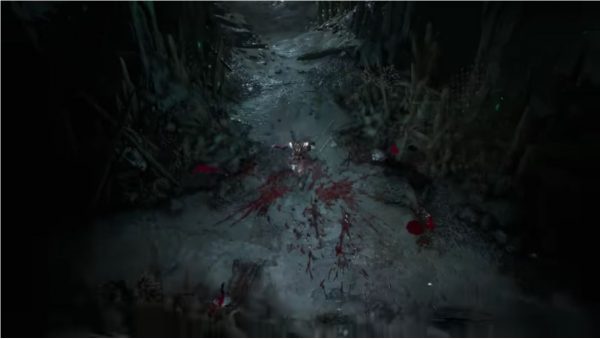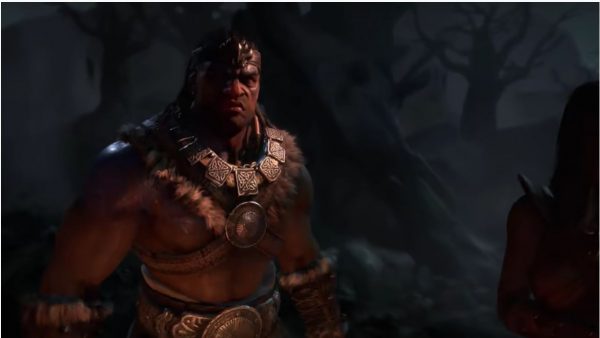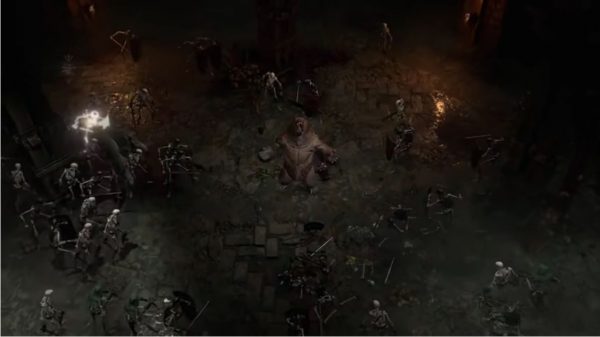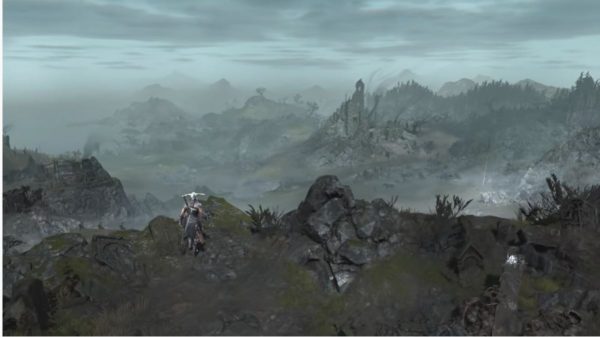What Is Diablo 4?
Diablo IV is the fourth title of the critically acclaimed Diablo series. It’s a dungeon crawler action RPG created by Blizzard Entertainment and announced at BlizzCon 2019.
Is There a Release Date for Diablo 4?
Unfortunately, Blizzard hasn’t revealed the release date for Diablo 4 yet. However, it’s been confirmed by Blizzard themselves that the game won’t be released for a few years yet. It’s a good possibility that the game is going to be released between 2023 and 2024, with late 2022 being the earliest possible release date.
Where Can You Play Diablo 4?
Blizzard stated that Diablo 4 is going to be released on PC, as always. However, they also stated that the game is coming out on the PS4, as well as Xbox One. Time will tell if the game will also be released on the newer PS5 and Xbox Series X/S consoles. But Blizzard did state that the development of both PC and console versions of Diablo 4 is proceeding at the same time.
Diablo 4 Gameplay Preview
As of right now, we don’t know that much about Diablo 4. What we do know comes from interviews with the developers, the trailers showing gameplay, and not much else. For now, we can only speculate on what is to come on Diablo 4. So, let’s start, shall we?
Gameplay
The core formula of the Diablo series hasn’t changed even after all these years. You still roam around, fighting monsters, getting better gear, and gradually getting stronger through this by killing more powerful opponents. You can fight enemies by normal attacks and by using a multitude of class skills exclusive to characters that players can customize by getting better equipment, as well as leveling talents. This is still pretty much the concept that’s used to this day on other RPGs. There are, however, a few things that Diablo 4 plans to add to the player’s arsenal. Other than the usual stuff that we’ve already mentioned above, there are plans to introduce three new attributes in Diablo 4. These are Demonic, Ancestral, and Angelic Power. The main differences between these three are the fact that Demonic and Angelic Powers alter the effect duration of negative and positive effects. Meanwhile, Ancestral Power is the increased chance of giving said effects to someone or something else. The game’s various weapons and other types of gear all have a rarity system common to RPGs today. This is what they plan to be the benchmark on how powerful an item is. Usually, the game’s rarest items are ones that have powerful and unique effects that go beyond altering character parameters. These can range from adding an aura to the character or dealing damage to enemies that hit you. Last but not the least, any gear that you have can further be improved and customized through runes and runewords found in the world. These allow players the ability to upgrade gear that they use with some additional effects. These are split into two types, Effect and Condition runes. Read on to better understand what they do.
Runic Languages
The runes in this game are unique in that you need a full runeword to get a full effect. And to do that, you need to know which rune does which. Now that’s a pretty easy distinction if the developers are right about it. The Effect runes, as described by the developers, are the additional effects such as dealing increased ice damage. Condition runes are those that will describe the situations and, yes, conditions under which the effect rune that preceded it will activate. Combining these two will then create a runeword, after which you can apply to the item of your choice. This new take on the rune system might have great versatility and one that will be interesting to see made manifest in the future.
Controls & Combat
The controls and combat in Diablo 4 still look similar enough to its predecessors and other isometric RPGs out there. And for those people that want a bit of nostalgia in the front, you’re pretty much in luck. Diablo 4 doesn’t seem to divert from that formula in the controls and combat part of its gameplay, which is great. Combat in the game also seems to still be influenced by what you’re currently using. So having higher gear and better weapons is still key to victory. Here’s hoping that they won’t go the Diablo 3 route and do something like the Auction House, though.
Character Classes
As of right now, Blizzard has revealed four character classes available for Diablo 4. These classes are the usual: Barbarian, Sorceress, Druid, and the recently revealed Rogue class. What’s surprising is the return of the Druid Class from Diablo 2: Lord of Destruction. Let’s talk about each class in detail below.
Barbarian
This class is an incredibly physical and brutal melee warrior. He dishes out heavy physical damage and uses a wide array of weapons with the ease of a painter creating a masterpiece. They can do this through the use of the Arsenal system, which allows Barbarians to switch between various weapon types. These can range from dual-wielding hand axes to a giant war hammer. This allows the Barbarian to adapt to the battlefield and have options depending on the situation and needs that you have. As for how it’s balanced? The Arsenal system can only have a pair of both one and two-handed weapons. As we’ve already stated, Barbarian players can carry four weapons in total with the ability to dynamically alternate between each of them at any time. If you think about it, they have a great potential for absolutely disgusting mix-ups and skill combos. Players who can manage all of this would be thrilled at the level of customization that they have at their fingertips. There are some skills in their arsenal that have specific weapon requirements as well. Other than this, Barbarians can also give Crowd Control immunity to other characters as well as themselves. They can do this, as well as giving other bonuses, through the use of Shouts. Specialization-wise, you can go for either Warlord or Berserker. The Warlord’s skills and talents are the more support style of Barbarian, buffing the party with bonuses, being a tank with high defense, and generally dealing damage through bleed damage and Crowd Control. The Berserker style of gameplay is the quintessential Barbarian, dealing maximum damage through reckless offensive power, buffing themselves, etc.
Sorceress
The Sorceress is a hero that deals big damage through the use of incredibly powerful elemental magic. However, they’re incredibly fragile and prone to one-shot if they aren’t careful—a certified “high risk, high reward” style of gameplay that’s going to appeal to a lot of people. Sorceresses can use spells that deal fire, cold, and lightning damage to enemies. The Sorceress class has a special mechanic called Crackling Energy. This mechanic allows a Sorceress’s Lightning spells to create a ball of energy with the right talents equipped. This ball can then be picked up by the Sorceress, allowing her to restore mana for more spell usage. Now chill spells are a bit unique in the hands of a Sorceress. For one, multiple casts of spells with the Chill debuff stack it to the person getting hit. When the stacks reach a certain point, i.e., the slow that the debuff gives reaches 100%, the enemy is immediately frozen. Frozen enemies cannot move or cast any magic or anything at all for the remaining duration of the debuff. Fire spells give the Burning effect on affected enemies. Burning deals fire damage over time and can have additional effects if the Sorceress equips the correct talents for it. Last but not the least, the Sorceress class uses an Enchantment system mechanic unique to it. With it, a Sorceress’s active skills can be slotted on any of her skill slots, or they can be put on her Enchantment slots. In total, you can put nine different skills in this mechanic. If they decide to put a skill into this Enchantment slot, the skill can no longer be used actively. Instead, the character obtains a new passive/semi-passive secondary bonus powerup.
Rogue
Rogues are for people that want to be a little bit poisonous and sneaky in their dealings with enemies. They’re proficient in using shortswords and daggers for melee while using bows or crossbows for ranged. They have something similar to the Barbarians’ Arsenal system where they can switch between them. Thus, they have a lot of build variety due to the no locking out of skill options part. The stats that a Rogue’s skill will have depend on their weapons. For example, a Rogue’s ranged skills are calculated using the ranged weapon that they have equipped. Lastly, mobility is a Rogue’s friend. Keep moving, don’t stop; if you stop, you’re dead. In Diablo 4, Rogue’s can specialize in three different ways: Combo Points, Shadow Realm, and Exploit Weakness. Each of these specializations is tied to a different Rogue group in the world of Diablo 4. And to unlock them, you need to complete a Rogue-specific quest exclusive to that specialization. The groups that you need to court are groups that are prolific in the previous Diablo games. These include the Sisterhood of the Sightless Eye, or at least the ones left of them, the diminished but still dangerous mercenaries of Kehjistan, and the outlaws of Hawezar. Lastly, they have something called the Imbue system. Rogues can use this system to modify what kind of damage type that their skills will deal in battle. These damage types can be either Cold, Poison, or Shadow. And depending on what type of damage you put there, you will have secondary effects. It’s easy to speculate what Cold and Poison damages are; as for Shadow, we don’t have a clue just yet.
Druid
If you’re picking the Druid as your class of choice in Diablo 4, know that they’re master shapeshifters, as well as one of, if not the most flexible classes in the game. (At least, that’s what Blizzard said.) You can instantly change between your Were form and back to human, and vice versa after a short three-second cooldown. These forms can range from bears to wolves. He also has magic, commanding a presence on the earth and the storm. Due to how versatile they are, they have access to different skills. And depending on what you equip, you can do some pretty crazy stuff. Summon a storm of lightning and rain while running around the area as a bear to turn your enemies into mincemeat. Or, maybe you want to be a wolf, sprinting around and tearing throats while the very earth itself stuns your enemies. Nature is at your disposal, and it’s not happy with the invaders. One of the more unique class mechanics that the Druid has in his possession is Crushing Blows. By using an Earth skill, which is using the earth to smack your enemies to the dust, you can reduce enemy HP by a flat percentage of their total. Do know, though, that the effect is reduced on other players or bosses. The last mechanic we need to talk about that’s used in a lot of the Druid skills is the Vulnerable debuff. If an enemy’s Vulnerable, they’ll take an additional 30% damage from any attacks. The debuff lasts until the enemy’s dead or losing a stated amount of damage from any type of source.
Graphics
Now in terms of its graphics, the game has some similarities to Diablo 3, but only in terms of polish. Other than that, the graphical atmosphere of the game seems to be taken directly from an earlier game in the series, Diablo 2. This is seen by some fans as an improvement over the previous game, as they felt that the atmosphere of Diablo 3 is a bit lighter. Other than that though, there’s not much difference. The game looks a bit cleaner in the graphical sense, and it’s better rendered. But other than that, the game looks like the same old Diablo that people loved.
Story
As per usual, Diablo 4 is set in the world of Sanctuary after the events of Diablo III: Reaper of Souls. Due to some pretty big negligence, Cultists have somehow managed to summon the daughter of Mephisto, Lilith, who is the main antagonist of the game. After the events of Diablo 1 through 3, both Heaven and Hell’s forces have taken a massive hit. This allows Lilith to establish a foothold in Sanctuary. Now for those that know their Diablo lore, and way back in the series’ timeline, Lilith and her angel lover Inarius made Sanctuary give refuge to humans and their eventual children. Because of their union, they gave birth to the race of the Nephalem, which you, the player, are a part of. However, the other inhabitants of Sanctuary feared that their existence would result in unwanted attention from Heaven and Hell. It’s because of this that they planned on killing all Nephalem. Of course, as any mother would, Lilith objected. Violently. This caused her husband Inarius to banish her into the void, hopefully for all eternity. Or at least, until her hateboner finally cooled.
World & Environment
In terms of Diablo 4’s world and environment, it appears that players can go through five different regions in the world of Sanctuary. These are the Fractured Peaks, Scosglen, Dry Steppes, Kehjistan, and Hawezar. There’s also talk about Hell being a playable area, though as per usual, there’s no confirmation on it. The game also seems to have procedurally generated dungeons in it as well, which Blizzard stated to consist of randomized layouts and filled with random loot. For now, though, there’s not much to tell about the game’s world and environment, as Blizzard still hasn’t revealed much.
Diablo 4 Compared to Older Diablo Games
Now that we’ve talked about what’s to come on Diablo 4, let’s talk about the games that came before it. Let’s start with the more recognizable one first, Diablo 2 and its expansions, and then move on to Diablo 3.
Diablo 2
Now a lot of people consider Diablo 2 to be the best RPG that came out of its generation, and a lot of them will stick by that statement. Now they aren’t wrong in that regard. The game is one of the best examples of how an RPG should be. With the dark and dreary atmosphere and the good gameplay, you won’t find any flaw in this game other than the fact that it’s old. Even then, nostalgia will still make you feel as if you’re playing the game for the first time again. Now that doesn’t excuse the fact that the game does have its flaws. For one, it can’t run well on the newer versions of Windows and now has a few hilarious bugs that can happen. Examples of this would be clipping enemies, enemies with movement that makes no sense, and a few others. However, the fact that the game was so popular and influential that it made Blizzard remaster it to Diablo 2 Resurrected speaks of its appeal to the masses.
Diablo 3
Now in terms of how it’s remembered, Diablo 3 isn’t looked back on as fondly as Diablo 2, and with good reason. Blizzard did quite a few wrong things when they were creating this game, with the most glaring being the Auction House. But other than that, the game also launched in a pretty bad state, with bugs and other things littering all over after you finish the first chapter. It took months for Blizzard to polish the game after its launch and we still haven’t talked about the fact that the game needs an internet connection to play. This is a huge departure from the previous games. As for how Diablo 4 is going to compare to Diablo 3? Well, let’s just hope that the game doesn’t launch in a bad state or has something similar to the Auction House or other monetization things.





